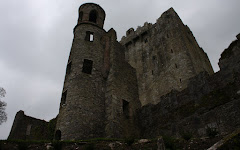(8) Pepper Lunch. Yes, Japan has McDonalds, Burger King, KFC, Pizza Hut, etc., but Pepper Lunch is Japanese fast food. One enters, selects one of the meals pictured on a machine, inserts money, and then the machines issues a ticket or tickets--depending on what one ordered and paid for. Next, one sits at the counter and gives the ticket(s) to the person behind the counter, who notifies the kitchen what to prepare before bringing a glass of water and a paper placemat. I almost always ordered the pepper steak--one of my few forays into the realm of red meat. The steak arrives still in the process of cooking on a very hot iron plate resting inside a larger wooden platter. My order always included a mound of bean sprouts and three green beans with two large carrot slices added the metal plate to heat just before it was brought to me. On the side came a plate of rice--small, medium, or large. Pepper Lunch was a must stop for anyone who came to visit. I wish I could have taken you there!
(9) The 8th Graders at Yokosuka Middle School. Indeed, the chance to teach eighth graders at Yokosuka Middle School has been one of the favorite parts of my life for the past four years. (I taught sixth grade my first year in Japan and then taught almost half of those same students when they became eighth graders two years later.) They have helped shape my thinking and my living; they have touched my soul. I will miss them.
At the end of third quater--the first week of April--our 8th grade team walked to the bowling alley on base for a bowling party and followed that with a picnic lunch. A few students suggested playing Red Rover only to learn that over half the kids had never heard of the game, much less played it. (The game has been banned from most schools because of the potential for student injury.) We teachers, foolishly or not--after all, isn't Red Rover a rite of passage in all childhoods?!--allowed the game to commence, and the team lines grew rapidly. I loved watching how those lines formed to include even the "macho-est" of boys holding hands with other "macho-est" of boys!
(10) Attending church in an office building in downtown Yokosuka. A building is really only a shell. What is right and true and of the spirit can join together in even the most unconventional locations. At first our church--comprised of two congregations,one Japanese and one American--met only on a portion of the third floor of the building, a building shared with an office of the Mitsubishi Corporation, another Christian denomination, a dentist office, some apartments, a few other sundry offices, and a cigarette machine in the main lobby. As the American congregation grew beyond what could be accommodated within the third floor space (the American congregation tripled in size during my five years in Yokosuka while the Japanese congregation remained virtually static), a portion of the sixth floor was leased and renovated for addtional classrooms. The elevators and stairwell became interesting socializing destinations in addition to their functions as transport.










































































